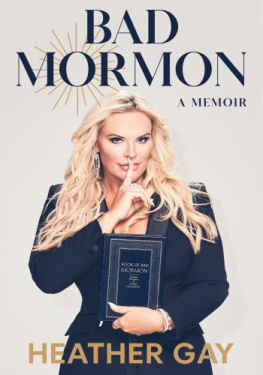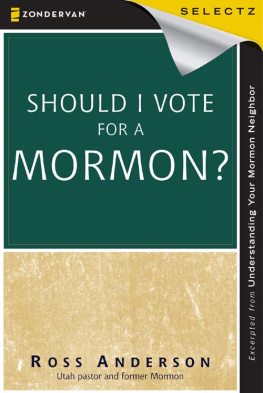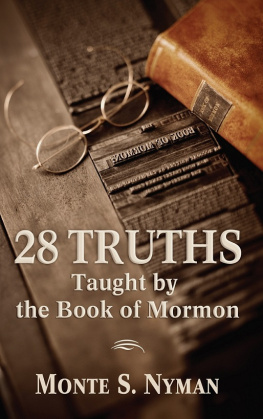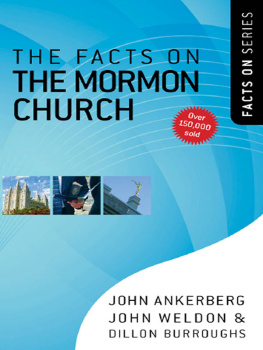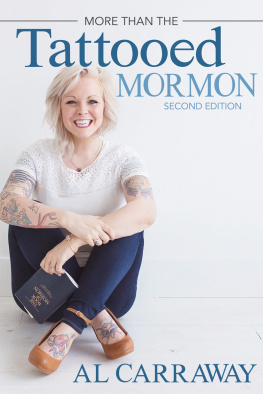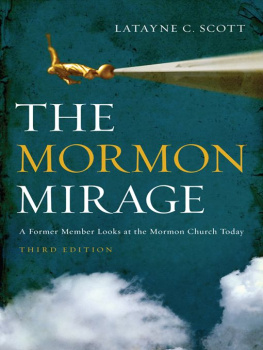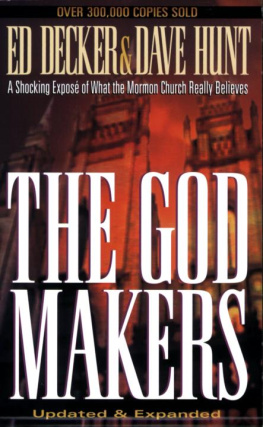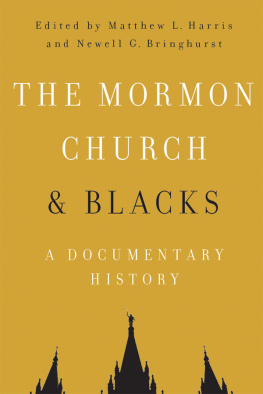Copyright 2019 by The University of Utah Press. All rights reserved.
Names: Prince, Gregory A., 1948- author.
Title: Gay rights and the Mormon Church : intended actions, unintended consequences / Gregory A. Prince.
Description: Salt Lake City : The University of Utah Press, [2019] | Includes bibliographical references and index. |
Identifiers: LCCN 2018046423 (print) | LCCN 2018048269 (ebook) | ISBN 9781607816645 | ISBN 9781607816638 (cloth : alk. paper)
Subjects: LCSH: Gay rightsReligious aspectsMormon Church. | HomosexualityReligious aspectsMormon Church. | Mormon gays. | Mormon ChurchDoctrines.
Classification: LCC BX8643.H65 (ebook) | LCC BX8643.H65 P75 2018 (print) | DDC 261.7dc23
Printed and bound in the U.S.A.
PREFACE
Proposition 8 was the first cause of this book, although I did not comprehend it immediately. In November 2008, one week after the election that made Barack Obama the forty-fourth president of the United States and simultaneously embedded in the California Constitution a ban on same-sex marriage, I received an urgent phone call from Helen Whitney. I had worked with Helen on her 2007 Frontline/American Experience documentary for PBS, The Mormons. Her call came in response to an email from Andrew Solomon, a distinguished writer and one of Helens best friendsand a gay activist. Having learned of the pivotal role that the Church of Jesus Christ of Latter-day Saints had played in the passage of Prop 8, Andrew lashed out at Helen for having produced a documentary film that put the church in a favorable light. She asked that I help her to mend the rift.
After a virtual introduction from Helen, Andrew and I carried on an email correspondence for many months that gradually brought the temperature down and became the basis of a genuine and lasting friendship. Andrew became not only a friend but also a tutor and role model, sensitizing me for the first time to nuances of the lesbian, gay, bisexual, and transgender (LGBT) world. Our friendship eventually resulted in the publication of a wonderful interview in Dialogue: A Journal of Mormon Thought, but the thought of writing a book had not yet germinated.
Another unplanned contact who became a lasting friend and further expanded my consciousness was Rick Jacobs, one of the most outspoken critics of the LDS Church during the Prop 8 campaign. But the most important event leading to the writing of this book occurred when Randall Thacker, the newly elected president of Affirmation: LGBT Mormons, Families & Friends, asked that I join Affirmations board of directors. I accepted the invitation and served on the board for five years. Experiencing, secondhand, the challenges facing LGBT Mormons who are attempting to blend their homosexuality with their spiritual tribe convinced me of the need to place in historicalperspective the churchs long and uneven relationship with homosexuality, both among its own members and in the public square.
I have conducted more than one hundred interviews in the course of researching this book, many of them with non-LDS sources. Some were of LGBT church members who stayed, but many others were of LGBT people and allies who had left the church. I also have amassed a database of over fifty thousand pages. Hugo Olaiz, Carol Lynn Pearson, and David Combe were remarkably generous in sharing their own archival collections.
Particularly valuable has been my association with William Eskridge, the John A. Garver Professor of Jurisprudence at Yale Law School. Bill is acknowledged as one of the leading legal authorities in the world on LGBT issues. He played a crucial role in gaining access to the rich record of court documents in the pivotal Hawaiian lawsuit Baehr v. Lewin that played the same role for marriage equality that the Stonewall Riot of 1969 did for national LGBT awareness. Bill has also provided ongoing critique of the text of the book. His trifecta of being gay, non-LDS, and a legal expert has been invaluable in my quest to try to get the story right.
Although I have attempted to engage voices from all sides of the issues treated in this book, I have been frustrated by two groups. The first was lay Mormons who advocated for Proposition 8 with time and means (donating more than $20 million to the cause) and remained supportive of it since the election. Whether for buyers remorse or other reasons, none were willing to go on the record and talk about their motivations and actions that helped propel Prop 8 to an unlikely victory.
The second was the LDS Church hierarchy. When I met with Michael Purdy of LDS Public Affairs in April 2015 and discussed the possibility of interviewing church officials for the book, he asked that I send him a formal proposal, which I did. Four months later he sent me the following in an email: After discussion, the decision was made to not offer anyone directly affiliated with the Church to be interviewed. The decision of church leaders not to participate necessarily means that their perspectives on the story are largely missing, except through documents in my database and secondhand accounts from other interviewees. Readers who see an imbalance in the narrative should understand that the churchs absence was their decision, not mine.
I felt urgency with this book that I had not felt with my prior three. The topic was and is timely within American and Mormon society, but moreimportant is the effect of the churchs policies and doctrines on the everyday lives of its LGBT members and their families. Nothing is more important than human life, and too many LGBT Mormons have chosen suicide because life was no longer tolerable. If this book can save even one life, I will have been overcompensated.
INTRODUCTION
The Mormons were late to the battle. Although LGBT issues were first reflected in church policies in 1968 and announced nearly simultaneous to the 1969 Stonewall Riots that thrust gay rights on to the national stage, those policies looked inward and had no discernible effect nationally. Furthermore, in building its policies on the foundational assumption that homosexuality was a bad choice that could be unchosen, the church positioned itself within the mainstream of religious and secular thought in the United States. What the church did withand toits LGBT members hardly differed from the treatment given by other religious traditions and thus wasnt even a blip on the national radar.
In 1993, however, the Mormon Church crossed the street. When a lawsuit in Hawaii, Baehr v. Lewin, appeared to set the stage for that state to become the first in the country to legalize same-sex marriage, the church entered the public square and became a potent force for preserving what was euphemistically called traditional marriage. This was a problematic term given the major changes in the definition of marriage in prior decades that made questionable just what was being preserved and inescapably ironic in a church that, a century earlier, had gone to the mat to defend its practice of polygamy, a form of marriage so nontraditional that it had been termed one of the twin relics of barbarismthe other being slaveryand was a key issue driving the formation of the Republican Party.


